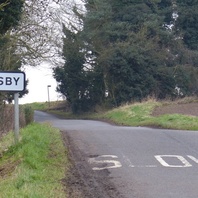
Viking Names
Frisby
Frisby, in the Gartree Hundred of Leicestershire, takes its name from a Scandinavian form of an ethnonym Frisa (gen. pl.) ‘Frisians’ and the Old Norse element by ‘farmstead, village’. This name has a similar construction to Frisby on the Wreake in the East Goscote Hundred of Leicestershire. Traditionally, the place-name has been interpreted as referring to Frisians who took part in the Viking invasions. However, the exact implications of such a name are not yet fully understood and are the subject of ongoing work by Dr Jayne Carroll of the Institute for Name-Studies, University of Nottingham.
Read More
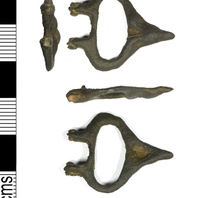
Viking Objects
Copper Alloy Buckle (LEIC-917DEC)
This buckle consists of an oval loop with a circular cross section and has an elongated triangular pin rest in the form of an animal head. The animal head has a pointed snout, rounded head with rounded upwards pointing ears which merge into the buckle loop. At the opposite side there are two short sub-rectangular cross-sectioned shafts which would have housed an iron pin that held the buckle pin and possibly an articulated plate.
Read More
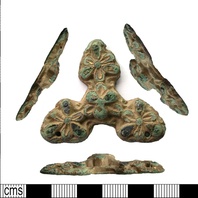
Viking Objects
Carolingian Trefoil Mount (LEIC-C5F14A)
This Carolingian trefoil mount has holes drilled through it for affixing to a surface, possibly a book. It is likely to have been brought from the European continent by Viking raiders or traders.
Read More
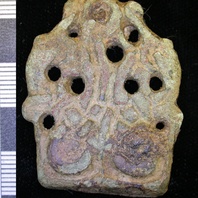
Viking Objects
Stirrup Mount (LEIC-C97582)
This example of a copper-alloy stirrup-strap mount is decorated with an interlaced design forming two ‘serpents’ interrupted by nine circular holes. It is similar to mounts of William Class A Type 1 but the holes and its large size match Class C mounts more closely.
Read More
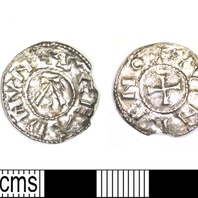
Viking Objects
St Edmund Penny (LEIC-4FC58C)
Between 895 and 915, Scandinavian settlers in East Anglia minted a series of pennies and half pennies with the inscription SCE EADMVND REX (St Edmund the king). These coins appear to have been used widely throughout the Danelaw, and a large number of them were discovered in the Cuerdale Hoard from Lancashire. This coin appears to have been made with a poorly engraved die and features a blundered inscription naming the moneyer. The Portable Antiquities Scheme suggests that the moneyer’s name was Winegar. The inscription reads YVINRE NO.
Read More
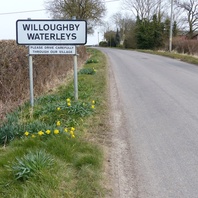
Viking Names
Willoughby Waterleys
Willoughby Waterleys, in the Guthlaxton Hundred of Leicestershire, is an Anglo-Scandinavian compound from Anglian wilig ‘a willow-tree’ and Old Norse by ‘a farmstead, a village’. This is a common hybrid place-name and in most cases of usage it is a Scandinavianized form of Old English wiligtun ‘farmsted or village where the willows grow’. Some names of this type may conceal the Old English wiliga-beag ‘a circle of willow-trees’. Willoughby is a well-watered parish and lies on gravel and clay between two arms of the Whetstone Brook and has many large pools in its vicinity. Therefore its affix Waterleys from Old English leah ‘a forest, wood, glade, clearing; (later) a pasture, meadow’ and Old English wæter (Old English) ‘water, a river, a lake’ is appropriate. The affix was likely added at a later date to distinguish this Willoughby from Willoughby on the Wolds just beyond the Nottinghamshire boundary to the north.
Read More
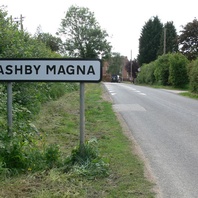
Viking Names
Ashby Magna
Ashby Magna, in the Guthlaxton Hundred of Leicestershire, is likely an Anglo-Scandinavian name coming from Old English æsc ‘ash-tree’ and Old Norse by ‘a farmstead, a village’. Some spellings may show influence of Old Norse eski ‘a place growing with ash-trees’ or even Old English esce ‘a stand of ash-trees’ on the first element. Ashby is a common place-name, but is is uncertain whether this name is an Old English creation Scandinavianized (i.e replacing Old English tun ‘an enclosure; a farmstead; a village; an estate’ with Old Norse by) or whether the name is fully Scandinavian in origin, with Old English æsc (Middle English ash) replacing Old Norse askr ‘ash-tree’. The affix Medieval Latin magna ‘great’ differentiates the township from Ashby Parva, which lies approximately three miles to the south-west.
Read More
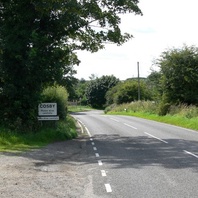
Viking Names
Cosby
The first element of Cosby, in the Guthlaxton Hundred of Leicestershire, is uncertain. It is likely the Old Norse male personal name Kopsi or Kofsi (genitive singular Kofsa) with Kofsa– assimilated to Cossa-. Alternatively the first element could be the Old English male personal name Cos(s)a which appears in such place-names as Cosham, Hampshire, Corsham, Wilshire and Cossington, Leicestershire. The second element is Old Norse by ‘a farmstead, a village’.
Read More

Viking Names
Coston
Coston, in the Framland Hundred of Leicestershire, is a Anglo-Scandinavian hybrid place-name probably coming from the Old Norse male personal name Kátr (genitive singular Káts), presumably an original byname from the Old Norse adjective kátr ‘glad’, combined with the Old English tun ‘an enclosure; a farmstead; a village; an estate’.
Read More
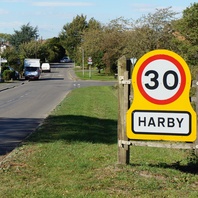
Viking Names
Harby
Harby, in the Framland Hundred of Leicestershire, contains the Old Norse element by ‘farmstead, village’. The first element has been a matter of discussion. The most recent scholarly opinion is that it is most likely from either Old English heorde ‘herdsman’, or Old Norse hjọrð ‘herd’, so either ‘farmstead or village of the herdsmen’ or ‘the herd farm’. For a village of the same name in Nottinghamshire it has also been suggested that the first element is the Old Norse male personal name Herrøðr, though this is now considered less likely.
